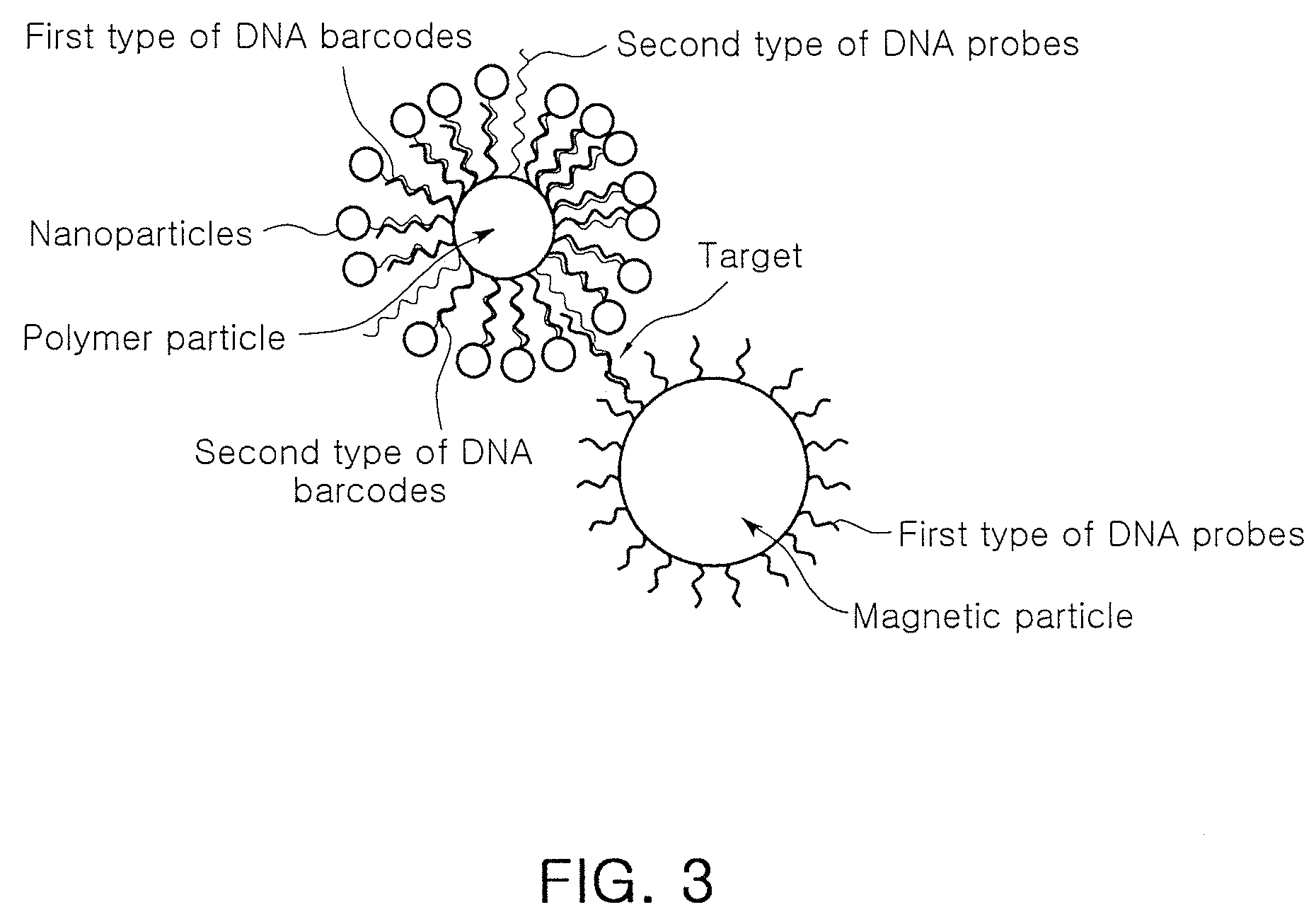Method for detecting target biological material using DNA barcodes
a technology of dna barcodes and biological materials, applied in the field of detecting target biological materials, can solve the problems of limited selectivity, low sensitivity, and system limitation in the amount of biological materials capable, and achieve the effect of rapid and economical manner
- Summary
- Abstract
- Description
- Claims
- Application Information
AI Technical Summary
Benefits of technology
Problems solved by technology
Method used
Image
Examples
example 1
[0063]First, oligonucleotides having the base sequences set forth in Table 1, magnetic particles (for isolation) having a diameter of 2.8 μm, and polymer particles (for analysis) having a diameter of 0.5 μm were prepared. The magnetic particles had a core composed essentially of iron oxide and a surface coated with streptavidin (Dyna-280, Invitrogen). As the polymer particles, silica particles (CS01N / 7659, Bang's lab) were used. Both the magnetic particles and the polymer particles were coated with streptavidin to allow the oligonucleotides, each of which had a biotin end, to be bound to the two kinds of the particles.
[0064]
TABLE 1Type of DNAsequenceFirst type5′-biotin AAA AAA AAA AAAA-3′of probesSecond type5′-biotin GGG GGG GGG GGGG-3′of probesFirst type5′-biotin GCC TCC ACG CAC GTTof DNAGTG ATA TGT A-3′barcodes(c-Barcodes)Second type3′-CGG AGG TGC GTG CAA CACof DNATAT ACT T biotin-5′barcodes(Barcodes)
[0065]The sequences in TABLE 1 relate to the following sequence identification nu...
PUM
| Property | Measurement | Unit |
|---|---|---|
| diameter | aaaaa | aaaaa |
| diameter | aaaaa | aaaaa |
| diameter | aaaaa | aaaaa |
Abstract
Description
Claims
Application Information
 Login to View More
Login to View More - R&D
- Intellectual Property
- Life Sciences
- Materials
- Tech Scout
- Unparalleled Data Quality
- Higher Quality Content
- 60% Fewer Hallucinations
Browse by: Latest US Patents, China's latest patents, Technical Efficacy Thesaurus, Application Domain, Technology Topic, Popular Technical Reports.
© 2025 PatSnap. All rights reserved.Legal|Privacy policy|Modern Slavery Act Transparency Statement|Sitemap|About US| Contact US: help@patsnap.com



